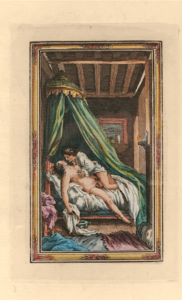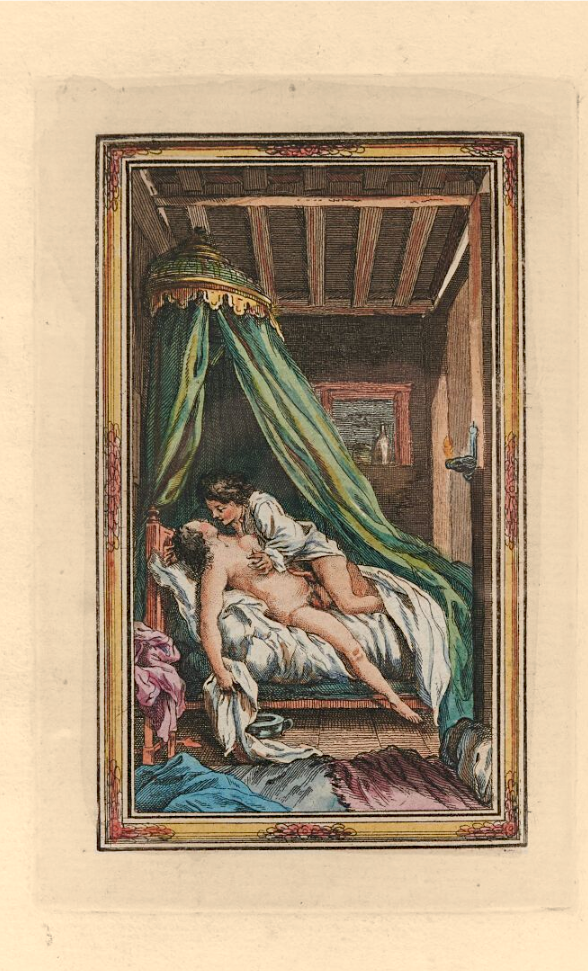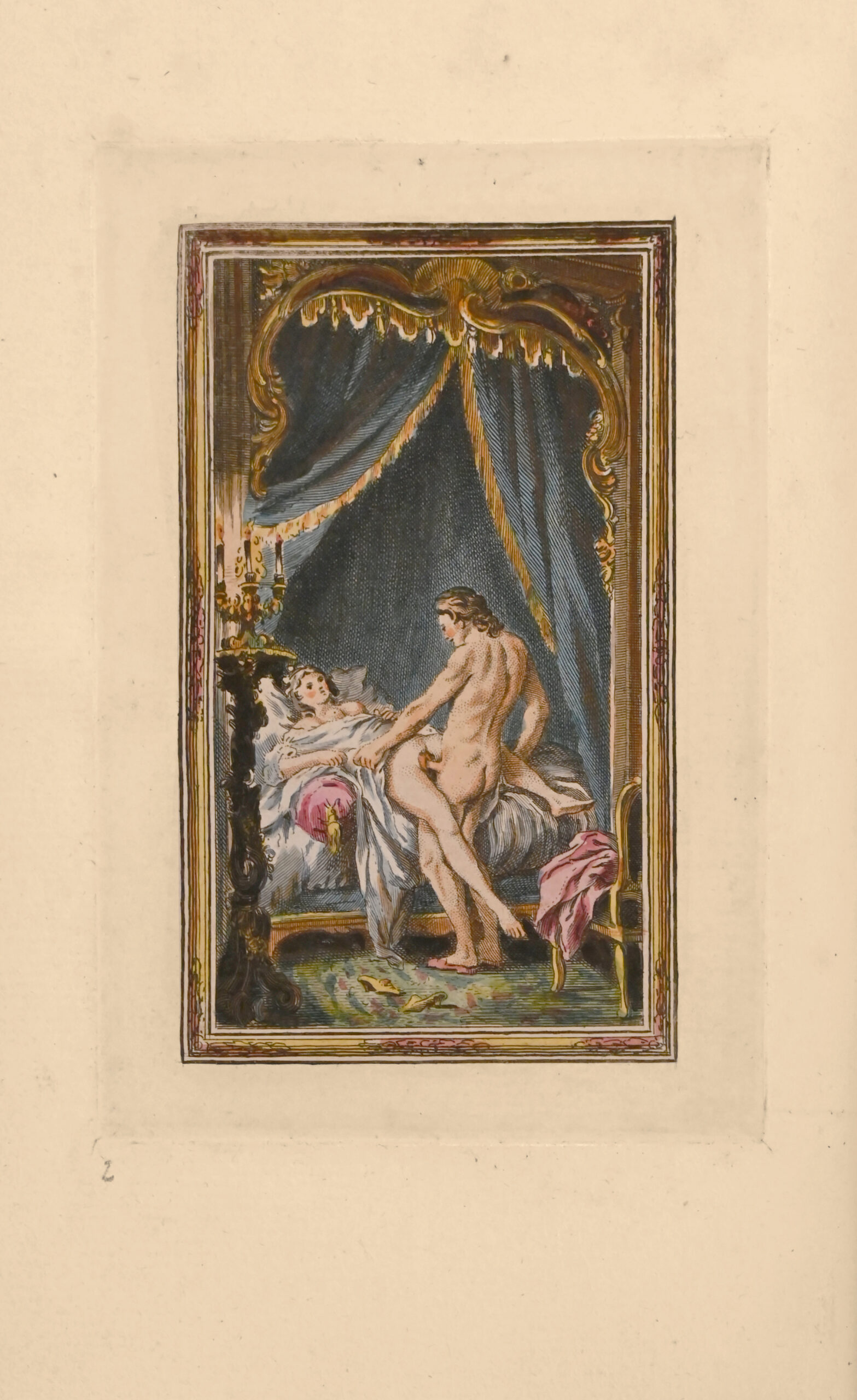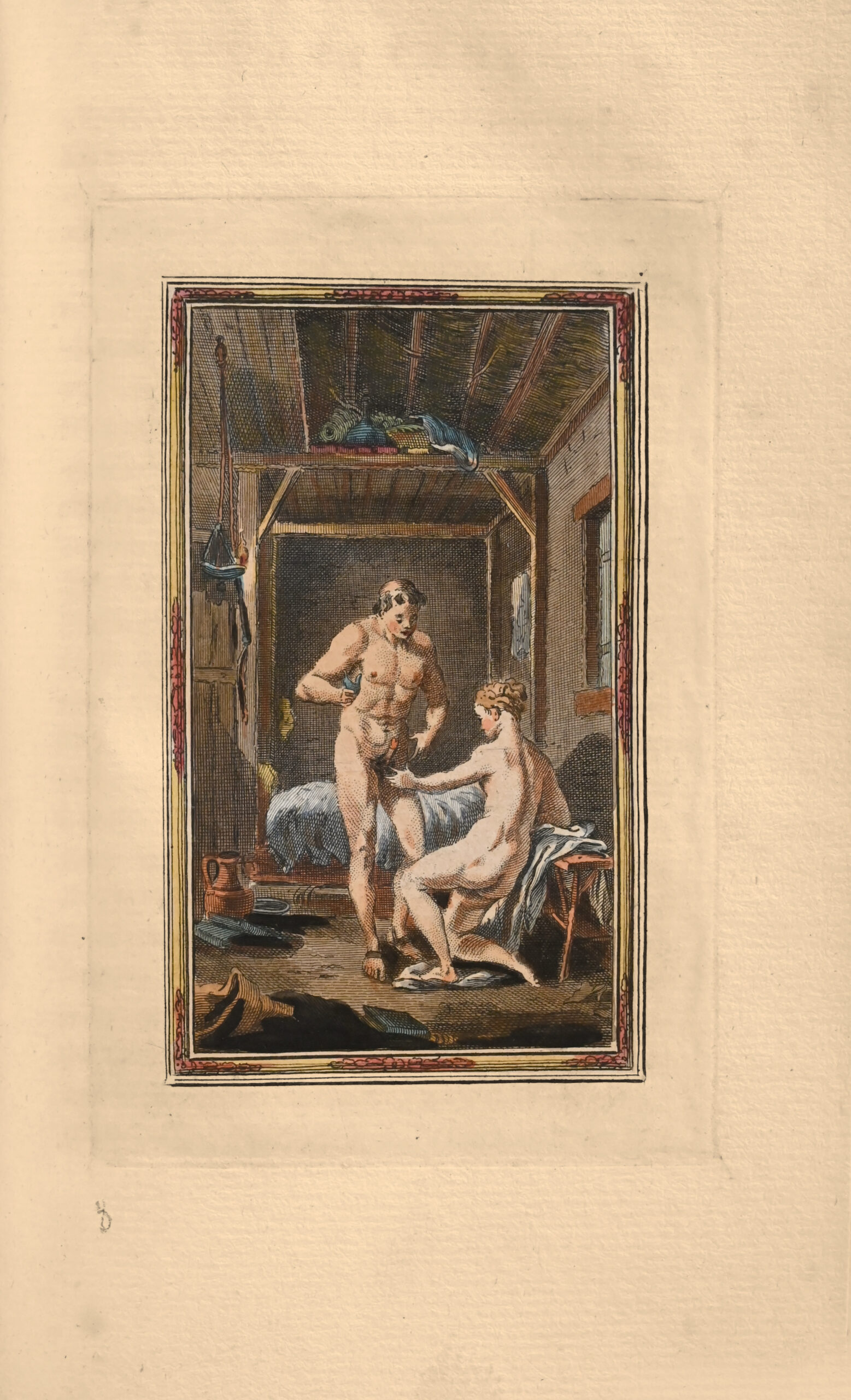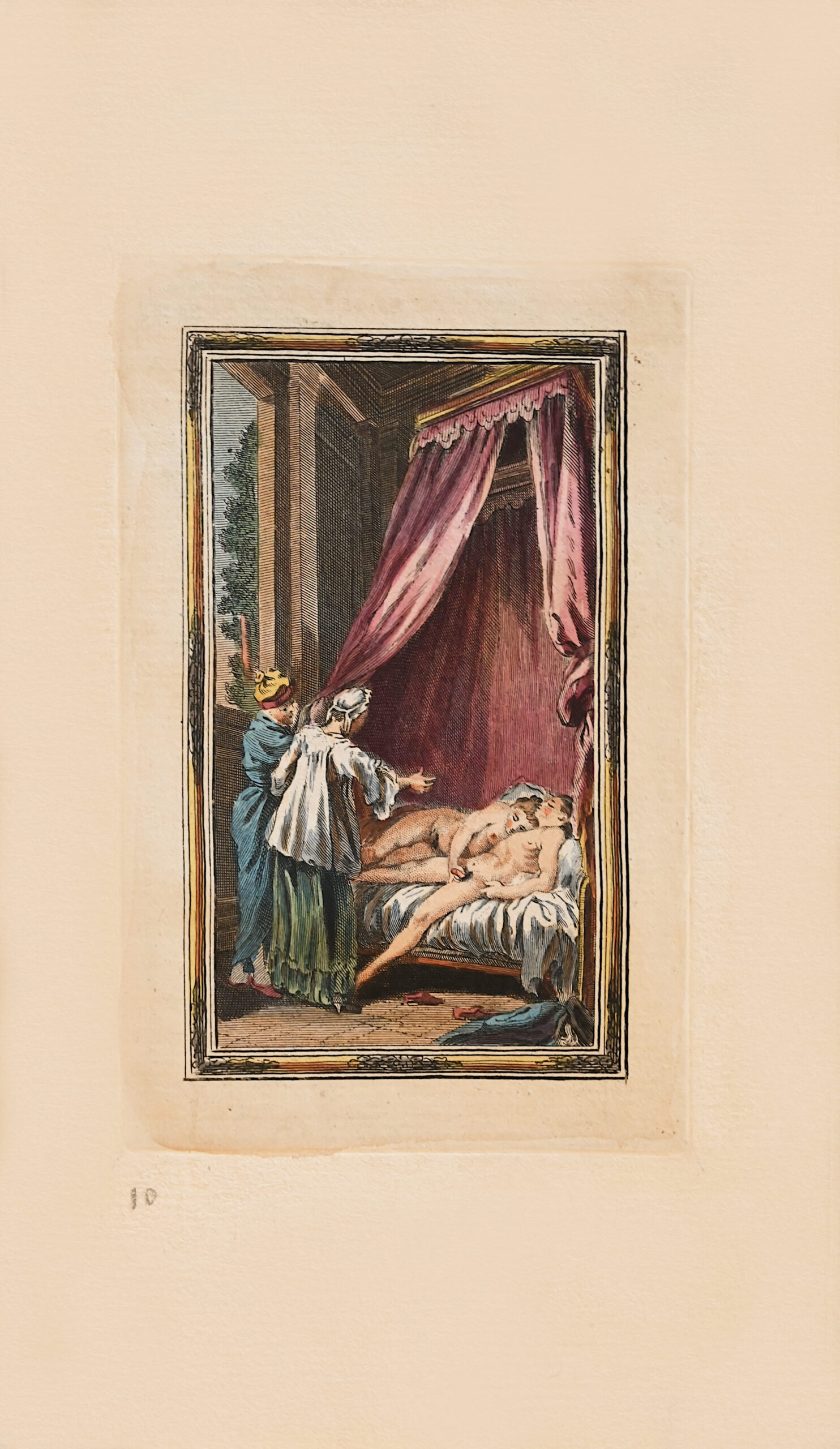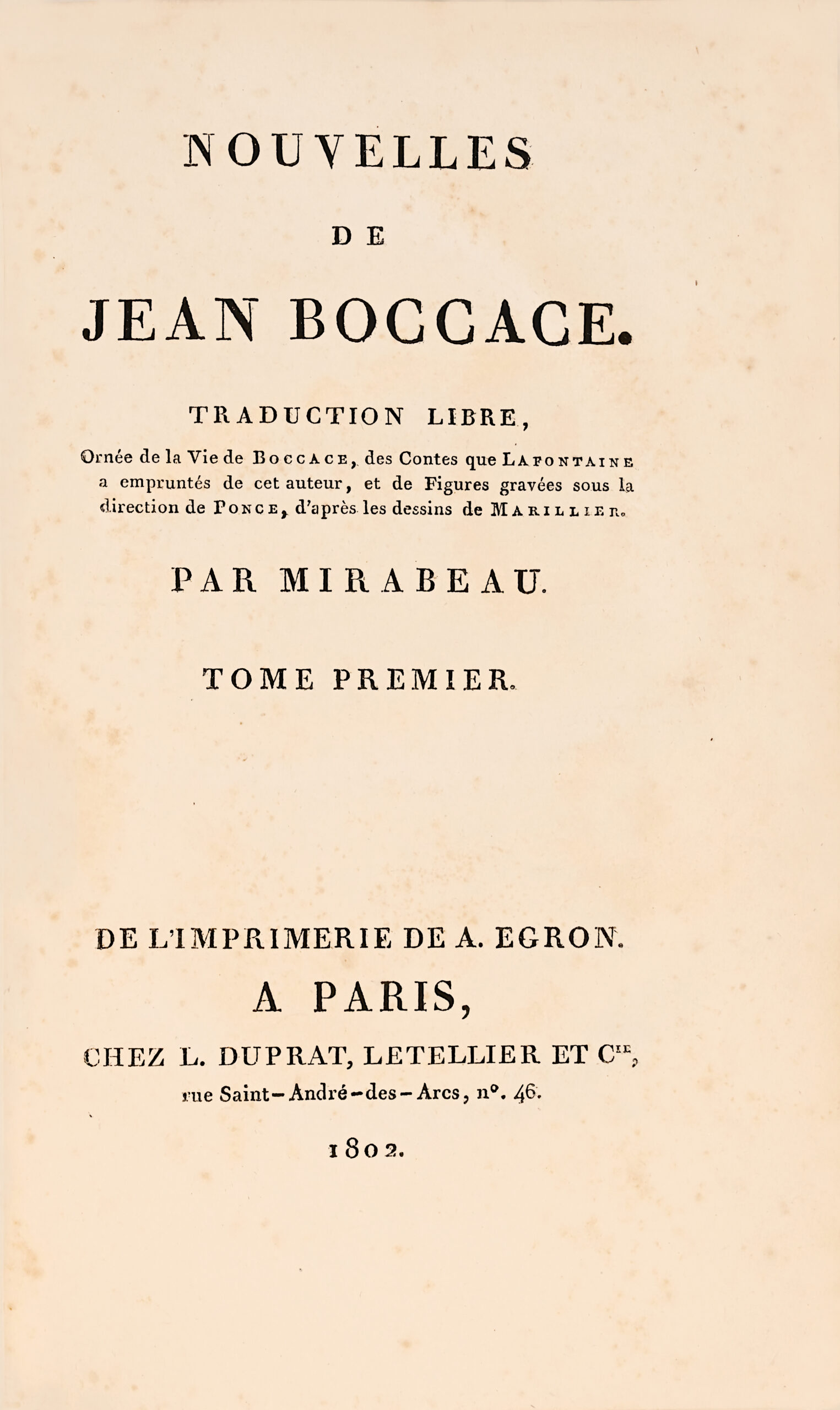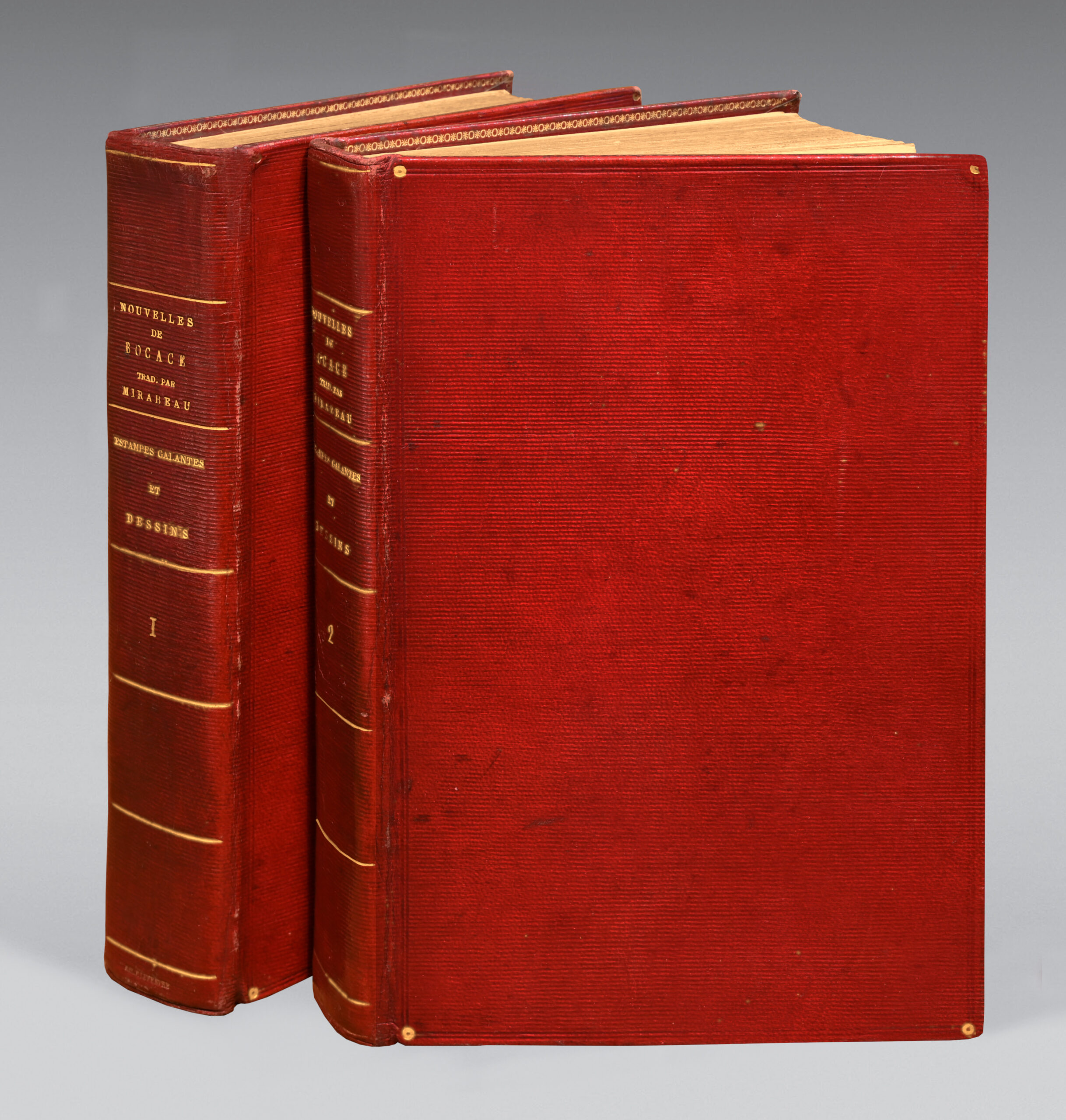À Paris, chez L. Duprat, Letellier et Cie, 1802.
4 parts in 2 volumes 8vo of : I-II: (8) pp., xx, 304, (4) (of which the last 2 blank); (4) pp. (of which the last blank), 273, (3) (of which the last blank), in all 1 portrait, 1 frontispiece, 1 coloured frontispiece, 3 drawings, 15 black and white plates and 7 coloured plates / III-IV: (4) pp. (of which the last blank), 243, (3) (of which the last blank); (4) (of which the last blank), 293, (3) (of which the last blank), in all 4 drawings in black and 1 drawing in red ink, 13 plates in black, 2 plates in colour.
Red straight-grained morocco, blind-stamped double fillet around the covers with corner rings, flat spines with fillets, gilt inner border, gilt edges, some foxing. Contemporary binding by Lefebvre.
202 x 123 mm.
First edition of the “free translation” of the Decameron by Honore-Gabriel Riquetti de Mirabeau.
Copy printed on vellum paper.
In front of some of Boccaccio’s short stories, Mirabeau has placed the tales in verse that Jean de La Fontaine composed based on them. The publisher has added 4 tales taken from Persian and Arabic, including one translated by the Orientalist Louis Langlès, and the others taken from the Mille-et-une nuits.
The copy is illustrated with 8 copperplates engraved after the drawings of Clément-Pierre Marillier by various artists under the direction of Nicolas Ponce.
Unique copy exceptionally enriched with 40 erotic pieces:
– 8 erotic drawings from the 18th century. 7 in graphite and one in red ink with a pen.
– gallant prints of Boccaccio’s tales. 10 copper-engraved plates enhanced with colours, including the title, all mounted on laid paper and glued in the inner margins of the volume.
– galant prints of Boccaccio’s tales. Suite of 21 copper-engraved plates, a title and 20 compositions after Hubert Bourguignon d’Anville known as Gravelot, distributed on request to complete copies of the illustrated London edition of the Decameron (1757-1761).
– portrait of Boccaccio after Gravelot, engraved by Jean-Baptiste-Michel Dupréel for the 1801 edition of the Decameron.
Mirabeau, nicknamed “l’Orateur du people” and “la Torche de Provence”, remains the first symbol of parliamentary eloquence in France. Although a member of the nobility, he distinguished himself as a deputy of the Third Estate to the States General after being rejected by the nobility.
In 1776, Mirabeau published his Essay on despotism, which denounced the arbitrary nature of royal power: “despotism is not a form of government […] if it were, it would be a criminal brigandage against which all men must unite”.
Mirabeau was imprisoned in the Vincennes dungeon from 1777 to 1780, where he met Sade, who was locked up there at the same time. He wrote a lot there: letters, in particular to Sophie de Monnier, published in 1792 as Lettres à Sophie, a masterpiece of passionate literature, as well as a virulent libel against the arbitrary justice of his time, Des Lettres de cachet et des prisons d’État, and also a particularly crude erotic work.
Close to the Alsatian Jewish philosopher Cerf Beer, Mirabeau published in 1787 Sur Moses Mendelssohn, sur la réforme politique des Juifs, inspired by the work of the German author J. Ch. Dohm, who published Über die bürgerliche Verbesserung der Juden (On the political reform of the Jews) in 1781 (then translated in 1782).
In 1788, along with Brissot, Clavière and Condorcet, he was one of the founders of the Société des amis des Noirs (Society of Friends of Blacks), which was set up to campaign for the immediate abolition of the slave trade and the gradual abolition of slavery in the colonies.
A precious copy preserved in its contemporary morocco binding signed by Lefebvre.
